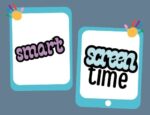selecting high-quality educational media
|
Digital media is increasingly getting popular, especially among children. But not all media is created for a purposeful use, some of them just lean towards gaming, and have a lack of substance and even hinder young children’s progress. So in order to make the best use of digital media, parents must choose thoughtfully for their children. In order to evaluate how media is high quality, it is important to understand how it is educational. It should promote cognitive, social, emotional, or physical development that is engaging to young children. Sources from PBS Kids emphasize how educational media is interactive and should offer opportunities to children to solve real world problems instead of consuming it passively.
.
According to American Academy of Pediatrics (AAP), a lot of children’s media claim to be “educational” but is actually not. A research from Marisa Meyer (et al. 2021) explains to us that a lot of children’s apps are not very educational, and only offer simplistic learning and repetitive experiences. It is then also noted that these apps also house ads of their own, promoting low quality apps as well as adding distractions towards children, to the point that some of the apps put pressure on the young children to make purchases. AAP also stated that even when a parent were to search “educational kid’s videos” on YouTube, a lot of the results would show kidfluencer videos around toys and brands, which would then not be a suitable medium to be a quality educational form of media or good storytelling. From another recent research that was conducted, the majority of the YouTube videos that the children watched have low educational value and a lot of ads to accompany it. These same contained ads were also not age appropriate for children, while the 1 in 4 videos that the children watched were intended for an older target audience.
.
Parents should look for media that encourages the child to make their own choices, solve problems, adapt to what they are learning at the moment, to have apps with them that adapt to their level of understanding, instead of shows that are too rewarding and overstimulating. Co-viewing might enhance the quality of learning the child gets, such as when parents ask questions in between about their child’s experiences, or when they play a game together. AAP further suggests this, where an adult watches alongside their children, as they have said that young children do not learn quite well from screens, especially with distractions present. They would be able to learn better with an adult beside them helping them understand what they are witnessing.
.
It is still important that the parents are there to monitor their children, and communicate with them regarding what media they are viewing and interacting. Parents are there to help flourish and develop their children properly with the values and lessons that they teach the children, along with the help of proper educational media.
.
Sources:
- American Academy of Pediatrics – https://www.aap.org/en/patient-care/media-and-children/center-of-excellence-on-social-media-and-youth-mental-health/qa-portal/qa-portal-library/qa-portal-library-questions/preferred-method-of-screen-time
- Common Sense – https://www.commonsensemedia.org/sites/default/files/research/report/2020_youngkidsyoutube-report_final-release_forweb.pdf
- Marisa Meyer (et al. 2021) –Meyer, M., Zosh, J. M., McLaren, C., Robb, M., McCaffery, H., Golinkoff, R. M., … Radesky, J. (2021). How educational are “educational” apps for young children? App store content analysis using the Four Pillars of Learning framework. Journal of Children and Media, 15(4), 526–548. https://doi.org/10.1080/17482798.2021.1882516

